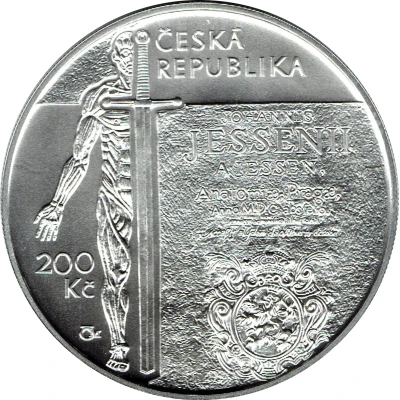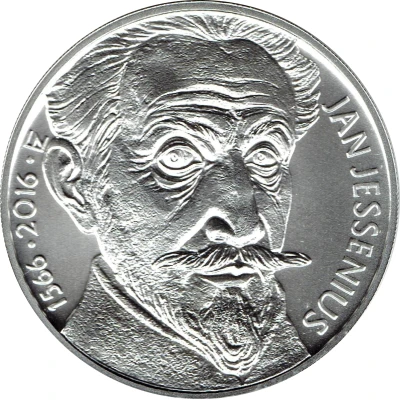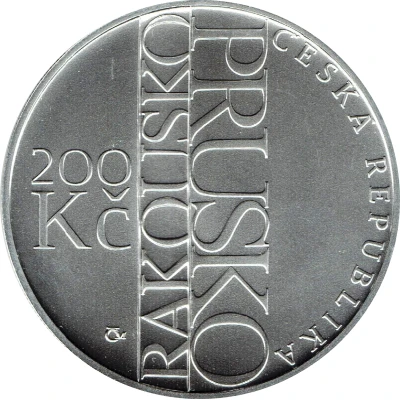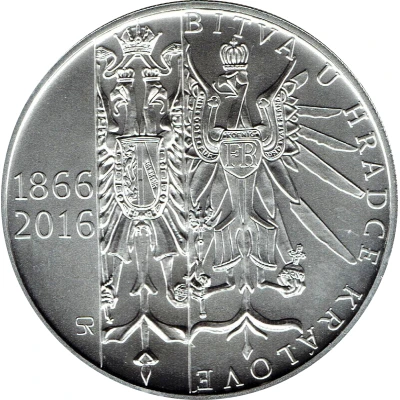


© boule02de
200 Korun Jan Jessenius
2016 year| Silver (.925) | 13 g | 31 mm |
| Issuer | Czech Republic |
|---|---|
| Period | Republic (1993-date) |
| Type | Non-circulating coin |
| Year | 2016 |
| Value | 200 Korun 200 CZK = USD 8.72 |
| Currency | Koruna (1993-date) |
| Composition | Silver (.925) |
| Weight | 13 g |
| Diameter | 31 mm |
| Thickness | 2.35 mm |
| Shape | Round |
| Technique | Milled |
| Orientation | Medal alignment ↑↑ |
| Updated | 2024-10-04 |
| Numista | N#100426 |
|---|---|
| Rarity index | 84% |
Reverse
Portrait of Jan Jessenius, name
Script: Latin
Lettering:
1566 • 2016 • FZ
JAN JESSENIUS
Edge
Two types of edge exist: milled and plain with engraved lettering
Lettering: ČESKÁ NÁRODNÍ BANKA * Ag 0.925 * 13 g *
Translation: CZECH NATIONAL BANK * Ag 0.925 * 13 g *
Comment
Date of issue 14-12-2016Jan Jesenius, December 27, 1566 – June 21, 1621, was a Bohemian physician, politician and philosopher.
From 1593 Jesenius was the physician of the Prince of Saxony, and from 1594 professor of anatomy at the University of Wittenberg. After 1600 he settled down in Prague as professor and anatomical consultant for Rudolf II, King of Bohemia and Holy Roman Emperor; in 1617 he was elected rector of Charles University of Prague.
In 1600 he attracted considerable public interest by performing a public autopsy in Prague.
He was also a diplomat and orator, and after the dethroning of Habsburgs in the Crown of Bohemia, he took several diplomatic missions for Bohemian estates and for the newly elected king Frederick of the Palatinate.
In 1618, Jesenius was arrested in Pressburg (Bratislava, Slovakia) after being sent as a deputy by the Bohemian estates, and was held in a prison of Vienna. In December, he was released in exchange for two Habsburg captives. There is a legend that, before his release, he wrote the inscription IMMMM on the wall of his prison cell. Ferdinand explained this as Imperator Mathias Mense Martio Morietur (Latin for "Emperor Mathias will die in the month of March"), and he wrote another prophecy next to it: Iesseni, Mentiris, Mala Morte Morieris ("Jesenius, you lie, you will die a horrible death").
Both predictions came true: Emperor Mathias died in March 1619, and Jesenius was arrested after the defeat of King Frederick of Bohemia by Emperor Ferdinand II in 1620 (Battle of White Mountain) and executed, along with 26 other Bohemian estates leaders, on the Old Town Square in 1621.
His most important philosophical work was Zoroaster (1593), a work of universal philosophy which attempted to recover the lost wisdom of the ancients.
(Abridged information from wikipedia https://en.wikipedia.org/wiki/Jan_Jesenius)
Interesting fact
The Jan Jessenius 200 Korun coin from the Czech Republic features a unique design that showcases the country's rich history and culture. The coin's obverse side features a portrait of Jan Jessenius, a prominent Czech physician, philosopher, and politician from the 16th century. The reverse side of the coin depicts a scene from Jessenius' most famous work, "The Republic of the Czech People," which highlights his vision for a utopian society. This coin is a great example of how numismatics can be used to educate people about history, culture, and art.
Price
| Date | Mintage | VG | F | VF | XF | AU | UNC |
|---|---|---|---|---|---|---|---|
| 2016 ČM | 10000 | - | - | - | - | - | - |
Values in the table are based on evaluations by sales realized on Internet platforms. They serve as an indication only for 200 Korun (Jan Jessenius) 2016 coin.



